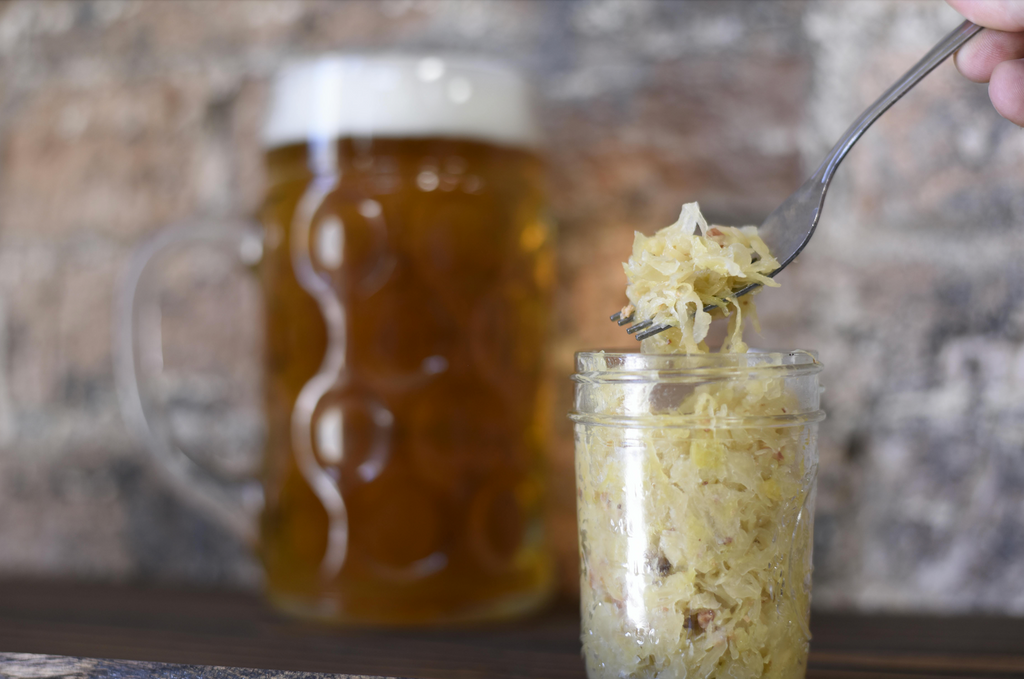For centuries, fermented foods have been a cornerstone of traditional diets.This spans across cultures and across time, from sauerkraut in Germany to kimchi in Korea and fermented Cycads and bottle brush here in Australia. Fermented foods don't just enhance flavour, but also provide a range of health benefits that many people are unaware of. In recent years, especially since the birth of social media, fermented foods have seen a resurgence in modern diets because of their positive impact on overall wellness and gut health.
In this article, we're going to do a deep dive into the historical significance of fermented food and their resurgence in contemporary diets. We're also going to provide a couple of lovely recipes for you to try at home yourself.
Historical Significance of Fermented Foods
One of the oldest methods of food preservation is fermentation, and it dates back thousands of years. Fermenting foods was discovered by ancient civilisations to not only extend the shelf life of their food but also enhance their nutritional value. Fermentation involves the eating up of carbohydrates in food by organisms such as bacteria so that they can create more bacteria along with byproducts like alcohol, gas and acids. Particularly of note is glutamic acid which produces the hard-to-find umami flavour. Some of the cultural examples include:
Sauerkraut
In Germany, sauerkraut is made from fermented cabbage.It's been a dietary staple for centuries and you'll find it in most shops these days around the world. It was valued for more than just its tangy flavour, but also for its ability to prevent scurvy during long sea voyages, though that's not so much a concern anymore.
Kimchi
It's recently been doing the rounds on TikTok, but kimchi is a spicy fermented vegetable dish. It's consumed every day in Korea, and it's known for its nutritional benefits and robust flavour. Kimchi is a huge source of vitamins A, B and C.
Miso
This Japanese dish is made from fermented soybeans. It's got a distinctive umami taste, and it's prized for its high vitamin K2 content, which is excellent for cardiovascular health and bone health.
Fermented Foods in Modern Diets
Today, fermented foods have regained their popularity because of their probiotic content. The role in their promotion of gut health has meant that fermented foods are everywhere. Probiotics are live microorganisms that, when consumed, confer health benefits.
Gut Health and Wellness
The human gut microbiome consists of trillions of bacteria. It plays a critical role in our digestion, immune function, and our overall health. Fermented foods are rich in probiotics which helps to really maintain that healthy balance of gut bacteria which is vital for the prevention of digestive disorders. Boosting the immune system and enhancing the way that we absorb our nutrients.
Probiotic Fat Burning Foods
Fermented foods have been recognised for their potential role in weight management. The probiotics found in these foods can influence the gut microbiota in ways that promote a healthy metabolism.
Fun recipes to try
If you want to incorporate more fermented foods into your diet, you can do with these simple recipes below. They're practical, easy, and you can do them at home.
Homemade Sauerkraut
One cabbage.
One tablespoon of sea salt per kilo of cabbage.
(optional) One to two teaspoons of caraway seeds or seasonal spice
Jar or jars large enough to fit the the shredded cabbage
Remove the outer leaves of the cabbage and set to one side
Shred the remaining cabbage finely
Mix the shredded cabbage with sea salt and caraway seeds in a large bowl.
Massage the cabbage for 10 minutes with your fingers until it releases its juices.
With a clean glass jar, pack the cabbage tightly, ensuring it's submerged under its own juices.
Place those saved outer leaves on top and tuck the leaves down the side of the jar to keep the shredded cabbage in place
Tightly screw a lid on the jar and let it ferment at room temperature for about four weeks (depending on room temperature)
Taste it regularly until you reach your desired flavour.
Classic Kimchi
One Napa cabbage.
1/4 cup of sea salt.
Two cups of water.
One tablespoon grated ginger.
4 cloves minced garlic.
2 tablespoons of Korean red pepper flakes.
2 tablespoons of fish sauce (optional)
4 chopped green onions.
Jar or jars big enough to fit everything inside
Chop the cabbage into bite sized pieces
Mix ginger, garlic, red pepper flakes, fish sauce and green onions in a separate bowl.
Massage the spice mixture in with the cabbage pieces
Pack the mixture tightly into a clean jar and press down to remove any air pockets, but leave a space at the top.
Lid the jar(s) and let it ferment at room temperature for a month or more, checking it regularly and tasting it for the desired taste.
A few notes:
1. Salt is essential to keep the nasty bacteria from taking over, this includes petrifying bacteria. At 1 tablespoon of salt per kg of veggies, beneficial bacteria are still able to propagate.
2. Make sure the fermenting jars are airtight while fermenting as this will minimise the possibility of mould growing
3. You'll have to burp the lids every few days to allow fermenting gas to escape, or you can purchase a fermenting kit here, it comes with a handy airlock to automatically release the pressurising gases.
4. Glass jar is best as you can see what's going on and plastic chemicals won't leach into your fermenting veggies (they get pretty acidic towards the end of the fermentation)




